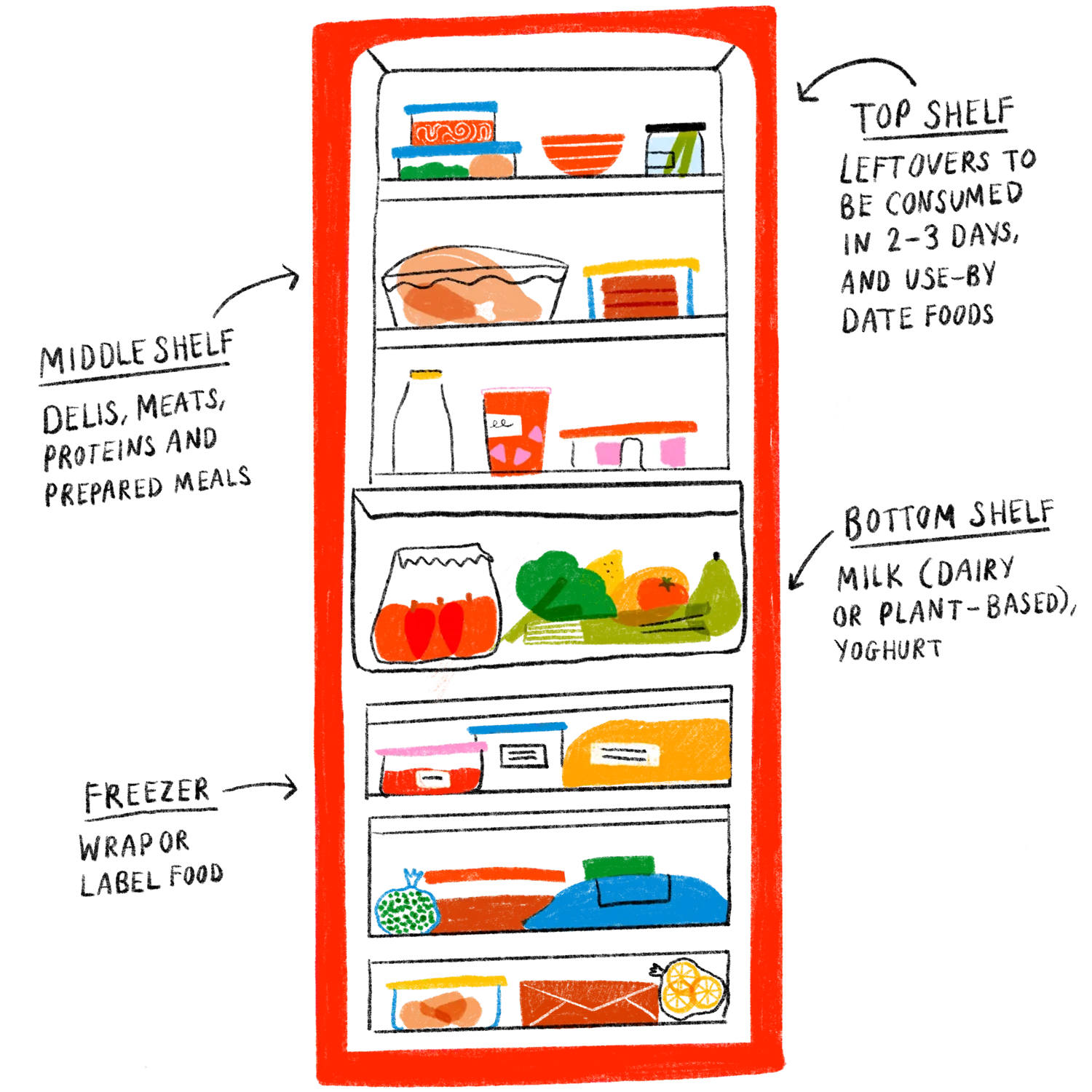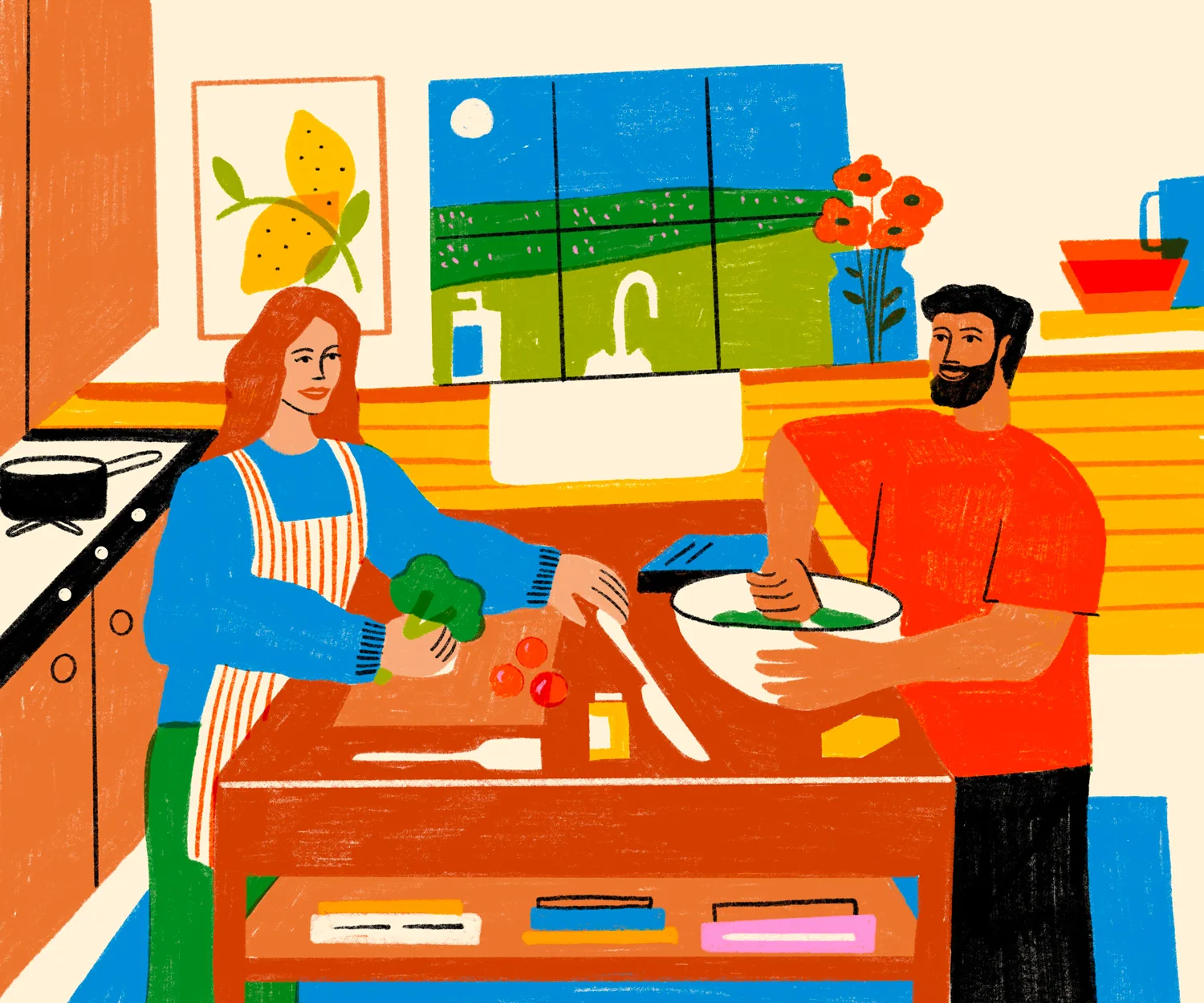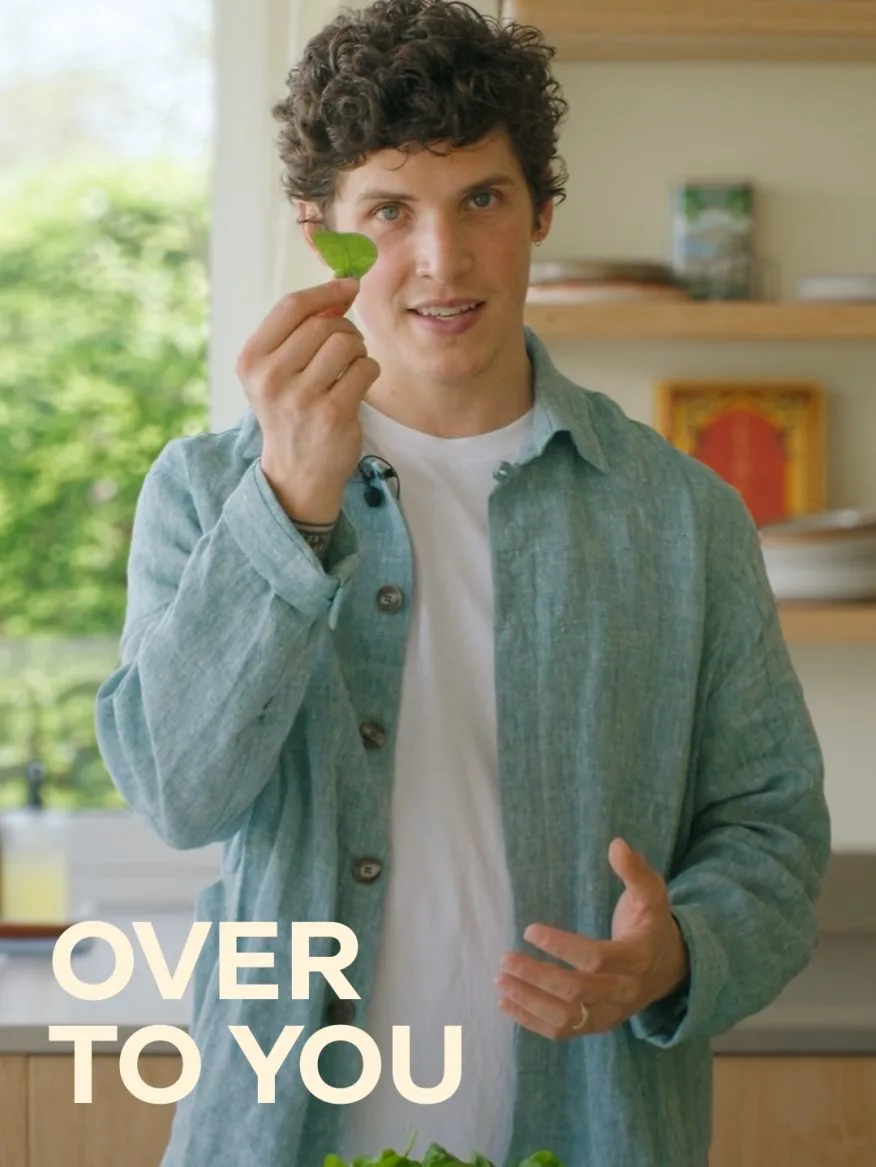This is the latest in our series of toolkits providing practical tips for a planet-friendly lifestyle.
Fixing food waste
It’s never anyone’s intention to waste food. Why would you buy food with your hard earned money to then just waste it? It doesn’t make any sense. And yet, food is wasted every second of every day.
The average US household throws away an estimated $1500 of edible food every year. Globally we lose roughly ⅓ of all food produced. In a world where so many go hungry, this is a shocking amount. Also because food waste accounts for a massive eight percent of greenhouse gas emissions. These emissions come from food production as well as from uneaten food decomposing in landfills. Let’s let that marinate…
Luckily, there are plenty of easy ways we can cut down on food waste in our own homes.
Max La Manna is a low-waste chef, campaigner and author of the award-winning cookbook More Plants Less Waste. His latest book, You Can Cook This!, was named the World’s Best Vegan Cookbook 2023 by Gourmand World Cookbook Awards. He shares daily recipe inspiration online with an audience of over 1.5 million followers.
1. Hack your kitchen habits
There are lots of things you can do to waste less food. Where to start? In your very own kitchen and cupboards.
Here’s a handy hit list:
Make a shopping list
Do a quick inventory of your refrigerator and cupboard and see which foods you already have on hand. Knowing what you have will help you not to overbuy – one of the main reasons why we waste food. How many times have we bought something only to come home and see that you now have double of that ingredient? Don’t feel like writing a list? Take a photo or video instead.
Look before you cook
I know it seems obvious, but clearly it isn’t happening. Cook with the ingredients you already have, find a recipe and start.
Save your leftovers
Eat them the next day or later in the week. The freezer is a good place to start if you want to extend the shelf life of your leftovers. I always have a few leftovers in the freezer and at the end of the month, I take them out to reheat and serve.
Use technology and donate food
There are a plethora of apps and charities where you can donate or pick up food from others in your community.
Compost
This is the last line of defence. Food doesn’t belong in landfills. Did you know it takes 25 years for a head of lettuce to decompose in a landfill? Whereas, if composted properly it would take 30-90 days and provide rich nutrients to the soil. Which of these sound better to you?
Imagine5 Volume 4 is here.

Cover star Madame Gandhi on the sounds of the Antarctic, free climber Alex Honnold reveals his biggest challenge yet, actor Rainn Wilson embraces his soulful side and much more more!
Starting at 7,- plus shipping
Get your copy now2. Store food properly
When you think of storing food, what comes to mind? Do you imagine wrapping your dinner leftovers, putting them in the fridge and calling it a day? In this section, you’ll discover how to store the most common foods, how to get the most out of them and what can actually be stored in the freezer, so that you never end up with limp lettuce, soggy spinach or sprouting potatoes ever again.
Let’s start with the basics. In terms of storage, all food can be classified under three groups; perishable, semi-perishable and staple foods.

Many raw fruits and vegetables plus meat, dairy and eggs are perishable and should be kept cool. As a rule, the temperature inside your fridge should be between 2℃ and 5℃.

Flour, grains, dried fruits and seeds are semi-perishable. If optimally stored and handled, in a clean and air-tight container, semi-perishable foods can be kept for a long time. Freeze and they’ll last even longer.

Dried beans, spices and canned goods are all non-perishable. If handled improperly they will spoil and lose their quality. Store in cool, dry conditions and out of sunlight.
Knowing how to store foods properly is one of the easiest ways to avoid food waste. Freshly-bought herbs are one of the things we often end up having to throw out before we’ve been able to use them. Get to grips with storing herbs and several other kitchen staples in the video below.
HOW TO STORE:
Potatoes and sweet potatoes
• Don’t refrigerate.
• Store in a cool dark place, preferably your cupboard.
• Allow air circulation and away from large appliances that generate heat.
• Keep separate from onions, garlic, bananas and apples.
• If the potato starts to sprout, remove the sprout, but if the skin is turning green, use them for compost.
Onions and garlic
• Store in a cool, dark place with low humidity.
• Don’t refrigerate.
• Allow some air circulation, away from potatoes and never near the stove.
• Never in plastic bags or airtight containers.
• Refrigerate leftover chopped onions and garlic by wrapping them in plastic or in a food storage container.
Cabbage and friends
• Once cut, seal in an airtight container.
• Uncut heads can be refrigerated without a bag.
• Quickly blanch, then freeze if needed.
Leafy greens
• Refrigerate unwashed.
• Seal in reusable zip-top bags.
• Excess moisture causes leafy greens to rot faster.
• Freeze half to use in smoothies.
Fruit
• Citrus fruit can be stored on the countertop for up to a week, then place in the fridge to prolong their shelf life.
• Refrigerate apples in a plastic bag (they prefer cold after harvesting.
• Underripe pears can stay at room temperature, once soft, stash them in the fridge.
• Sensitive fruit like strawberries, blueberries, raspberries, and blackberries can be stored in a crisper drawer.
Bananas
• Keep them cool and protected from direct sunlight.
• Fully ripe bananas – if not eaten straight away – should be peeled, sliced, kept in an airtight zip-lock bag, and placed in the freezer.
• Squeeze a bit of citrus juice on exposed pieces of bananas, this will prevent them from turning brown too quickly.
• Don’t store bananas with apples, avocados, or other fruit. Bananas need their space.
Bread
• A bread box is your friend.
• Keep in a cool, dry area in your kitchen.
• Store in a paper bag, never plastic – plastic encourages mold.
• Avoid storing bread in damp, airy spots in the kitchen – this can speed up molding.
• If you’re not going to eat the loaf of bread within 3 days, the best option is to freeze it – better yet, freeze half the loaf once you bring it home.
3. Use your leftovers
Please try not to throw away your leftovers. They can be tomorrow’s lunch, or dinner, saving you time and money too! What’s not to like? I love using leftovers. They’re so delicious and sometimes even taste better than the day you first served the dish.
Here are some golden guidelines:
- Cool leftovers as quickly as possible, ideally within 2 hours.
- Divide leftovers into portions; refrigerate or freeze.
- If refrigerating, use within 2 days.
- When reheating food, make sure it reaches 70℃ for 2 minutes to kill off any bacteria.
- Always defrost leftovers completely, either in the fridge or on the countertop.
- When defrosted, reheat only once. The more times you cool and rehab food, the higher the risk of food poisoning.
- For safety and to waste less food, only take out of the freezer what you intend to consume them within 24 hours.
4. Know your dates
Do you know the difference between use-by, best-before, and sell-by dates? I have a confession: I was totally confused by this a few years ago, but once I wrapped my head around it, I finally conquered this confusing labelling system. It’s one area that is often overlooked when preventing food waste.

This indicates when the food is no longer deemed safe to eat by the manufacturer. Some foods can be eaten after this date if frozen before the use-by-date.

Best-before dates are all about the quality. Enjoy this food, before or on this date. After this date, it can be consumed, but may not be at its best.

This is the date by which the shop should sell the product. As a consumer you can largely ignore this. Just use your best judgement before making a purchase.
5. Organize your fridge
What goes where in your fridge matters if you want to prolong the life of your ingredients. Check out this easy at-a-glance diagram. Why not stick it to your fridge for reference?

Always keep an eye on the temperature of your refrigerator and by not over-crowding it. Stuffing your fridge with food can impact the circulation inside meaning that food can spoil even more rapidly. Every 2 weeks, go through your fridge and see what belongs and what served it’s time. It also prevents food inadvertently getting shoved to the back and lost forever.
6. Get creative with your cooking!
Check out my favourite recipe hacks below to use everything (even the scraps) and reduce food waste.
WHAT CAN I DO WITH:
Broccoli stems
Grate and fried to make rosti. Steam the stem until soft and blend with pine nuts, basil, lemon juice and olive oil to make a pesto.
Citrus peels
Make a non-toxic household cleaner by soaking the peels in vinegar or blend the entire fruit with water and freeze in ice cube trays to serve as a zesty accent in drinks.
Chickpea water
Leftover liquid from a can of chickpeas (also called aquafaba) makes the perfect substitution for egg in homemade pasta or meringues.
Banana peels
Fry and bake to make “bacon”. Watch the video to find out how.
Stale bread
Use to make breadcrumbs, bread-and butter-pudding or for thickening sauces.
Carrot tops
Add to salads, stir fries or soups. Also makes the perfect pesto or chimichurri.
Leftover scraps
Great for making vegetable stock. Store your veg scraps in a sealed container or reusable bag, tip into a large pot of water, bring to a simmer and cook for 15-20 minutes. Strain and compost the scraps. You’re left with a delicious, golden broth.
Cauliflower leaves
Thinly slice with onions and garlic or batter and coat in breadcrumbs before baking – a delicious addition to any dish.
Next time you’re about to throw something away, just stop and ask yourself: ‘Is there something I can do with this?’. As this toolkit shows, the answer is clearly yes. And the best thing? Getting creative with food waste is not only great for the planet, it’s also fun, and tasty too.
Enjoy.

For more on food waste
Books
Waste by Tristram Stuart
Food Rules by Michael Pollan
You Can Cook This! by Max La Manna 🙂
Article
The Secret Life of Leftovers by Nat Watkins
Documentaries
Wasted! The Story of Food Waste (2017)
Just Eat it! A Food Waste Story (2019)
Food Inc. (2008)
Series
Regeneration: Understanding Food Waste, a series with BBC Earth
About Imagine5
We are storytellers inspiring you to live a planet-friendly life. Through our stories we shift perspectives and help you see that sustainable change is already underway. Sparking imagination that leads to action, creating a shift to sustainable behaviour as the norm. It’s happening.
Read moreA 3-course meal without the waste














